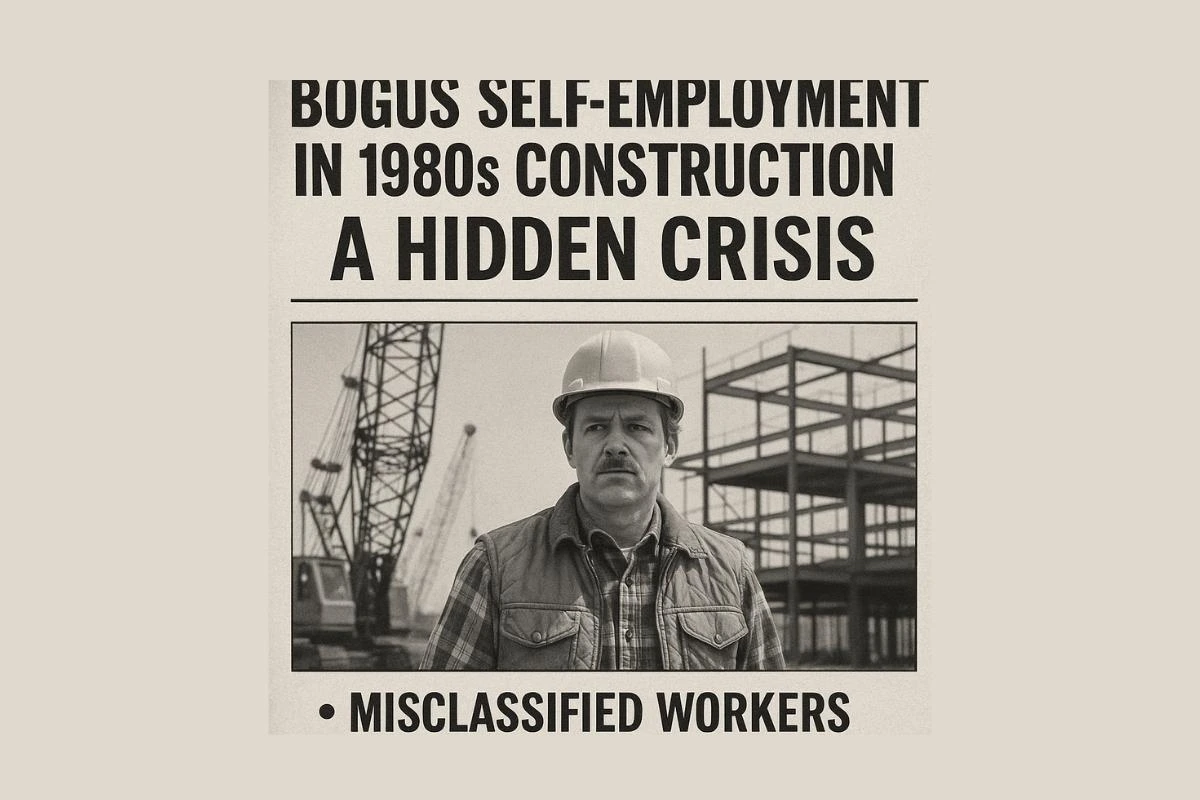In the 1980s, construction sites across the UK were booming. But behind the noise of drills and rising scaffolding, something else was building a quiet tax loophole. Thousands of workers were listed as self-employed, but many never chose that path. It was called bogus self-employment, and it reshaped the industry in ways still felt today.
What Is Bogus Self-Employment?
Bogus self-employment happens when a worker is treated as self-employed on paper but in practice, works like an employee.
These workers:
- Had fixed hours
- Used the contractor’s tools
- Took orders from supervisors
- Yet received no employee rights or benefits
It was a setup that let employers skip taxes and avoid obligations at the worker’s expense.
Why It Took Off in the 1980s
The 1980s brought big economic shifts. Deregulation, weakened unions, and a push for flexible labor gave employers more control over work arrangements.
In construction, this meant:
- Avoiding PAYE systems
- Skipping National Insurance contributions
- Reducing training, pensions, and sick pay
At the same time, the 714 certificate and SC60 form allowed legitimate subcontractors to manage taxes more flexibly. But not everyone using those systems qualified or even applied.
Instead, many were simply declared self-employed by the contractor, with no real say in the matter.
How Big Was the Problem?
By the late 1980s, estimates showed that up to 60% of construction workers were classed as self-employed. Parliament documents later revealed:
- £2.5 billion lost in unpaid National Insurance
- Training and safety programs were scaled back
- Long-term workers had no employment security
For many, it was self-employment in name only no control, no rights, and often no understanding of the tax burden they were taking on.
Real-World Impact on Workers
Imagine showing up every day at the same job site, following orders, clocking in and out yet being told you weren’t employed. That was the reality for thousands.
Many thought they were protected by law, only to find:
- No holiday pay
- No redundancy rights
- No employer-backed pension
- Full tax responsibility dropped in their lap
And when the system shifted in the 1990s, some were hit with back taxes they didn’t even know they owed.
Policy Response and the Road to Reform
The government didn’t act overnight, but pressure built. As reports of lost revenue and labor abuse mounted, the Construction Industry Scheme (CIS) was reformed.
By 1999:
- SC60 was phased out
- Stricter rules for 714 certificates were enforced
- New forms like CIS6 required higher income thresholds
- Audits increased to catch misclassification
These moves narrowed the loophole, but the damage was done.
Learn more about the SC60 and self-employment systems that laid the groundwork for these misclassifications.
Why It Still Matters Today
Fast-forward to today’s gig economy and the same questions are being asked:
- Are workers truly independent?
- Should companies be paying benefits?
- Who takes care of tax and insurance?
The debates around IR35 and platform-based labor echo the bogus self-employment crisis of the 1980s. Only the job titles have changed.
Bogus self-employment in 1980s construction wasn’t just a tax issue, it was a labor crisis hidden in plain sight. While some enjoyed the flexibility of 714 certificates and gross payments, many others were left without support, misled by paperwork they didn’t write.
Understanding this history isn’t about looking back, it’s about recognizing the patterns still repeating today.













